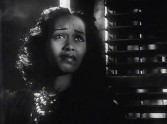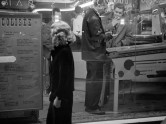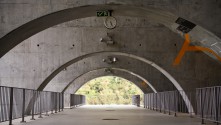
Los Angeles Plays Itself
US, 2003, DCP, color, 169 min.
DCP source: Cinema Guild
A touchstone of early 21st century cinema, Andersen's magnum opus Los Angeles Plays Itself is an epic and purposefully meandering essay film that distills a bracingly polemic film history from its expansive critical survey of uses and abuses of the City of Angels by an impressively wide range of films—Hollywood blockbusters, low-budget genre pictures, independent, experimental and even pornographic films. Andersen's rigorous mapping of scene after scene onto the actual and imaginary Los Angeles is aided by frequent returns to the "scenes of the crime" of former film locations, via contemporary footage shot by Deborah Stratman. The film's arresting rhythm comes from Andersen's deft and mordant commentary (spoken by filmmaker Encke King), which remains almost conversational yet always imperious in its careful unveiling of those larger historical, cultural and ideological forces that render the cinematic city such a vivid palimpsest for ever-changing ideas of narrative and community. More than a corrective of cinema's faulty sense of place and history, however, Los Angeles Plays Itself powerfully uses rare counterexamples—such as Kent MacKenzie's The Exiles (1961) and Billy Woodbury's Bless Their Little Hearts (1984)—to argue that the indignities and false myths so frequently imposed upon Los Angeles by the cinema are direct expressions of actual injustice suffered by so many of its displaced, disenfranchised and, on the silver screen, silent inhabitants. With Los Angeles Plays Itself, Andersen defined a distinct conception of film analysis: both a guerrilla repurposing of Hollywood films and a personally invested, politically charged yet equanimous mode of close reading that is able to decode an unruly multitude of major and minor films. The enduring cult status of Los Angeles Plays Itself was confirmed by the great excitement and acclaim that greeted its first official release in 2014, more than ten years after its Toronto premiere.













